Features of the content and care for Newfoundland.
Contents
- Newfoundland - breeds of dogs: breed characteristics, breed standard, height, weight
- Newfoundland - the history of the breed of dogs
- Newfoundland dog-feet on the legs: photo
- Newfoundland dogs color - gray, black, brown, chocolate, silver, black-white: photos of
- Newfoundland - a breed of dogs: the character
- How does the Newfoundland host change?
- When does the Newfoundland heat begin, how many Newfoundlands live?
- How to feed newfoundland, what kind of vitamins to give?
- How do I keep and care for Newfoundland in an apartment?
- Best nicknames for a Newfoundland dog: the
- list What is the difference between a diver from Newfoundland?
- Newfoundland - breed of dogs: reviews of owners
- VIDEO: Newfoundland
Newfoundland is a workhorse that is used as guards. This breed is not very common in our region, and in vain. Dogs can move a lot, jump and can withstand heavy physical activities. At the same time, there are few injuries and are quite hardy.
Newfoundland - breed of dogs: rock characteristics, breed standard, growth, weight
The main feature of the breed is its high weight and height with good maneuverability and mobility. Dogs, despite a huge mass, have a good command of their body. Females are slightly smaller than males. The contours of the head and the whole body are more refined. Excess weight is not welcomed, as it provokes the emergence of many diseases.
Characteristics:
- Height for males 69-75 cm and for females 65-69 cm
- Weight for males up to 70 kg, and for females up to 55 kg
- Body of rectangular shape with fleshy and strong paws
- Tail of saber-shaped, slightly raised aboveback level
- The head is large and characterized by rectangular contours
- Teeth straight and level, close as claws or scissors
- Withers are large and developed. For females, its size is not regulated.
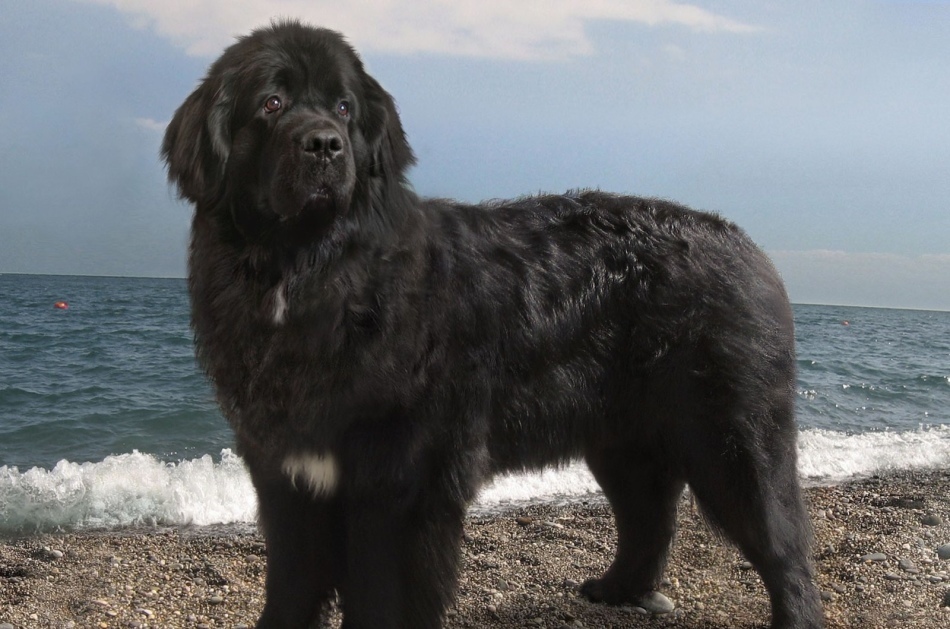 Newfoundland - breed of dogs: rock characteristics, breed standard, height, weight
Newfoundland - breed of dogs: rock characteristics, breed standard, height, weight Newfoundland - the history of the breed of dogs
Newfoundland has been known for a very long time. The first mention of the breed dates back to the 16th century. But the official name of the breed was only in 1775.
The breed is named after the island, on which there was a settlement of fishermen and merchants. This island is characterized by a humid climate in the summer and very cold winters. In these parts, dogs valued strength and endurance. That's why Newfoundland has become popular.
Five years later, the breed almost disappeared. The fact is that the government banned keeping more than one pet in the family. That's why some of the dogs were taken out of the island or destroyed. But the fact is that the residents were not ready to give their helpers. This is due to the fact that dogs in the cold season dragged heavy sledges, helped pull out heavy nets with fish from the water and even rescued their owners when drowning.
After the First World War, the number of goals was only 23. Therefore, the puppies received were rather weak due to blood ties. Now the breed is not very common, it is due to the huge size of individuals. The breeding of these dogs is carried out by a special club, which is located in Canada and the USA.It is thanks to this club that the breed survived to this day.
 Newfoundland - the history of the breed of dogs
Newfoundland - the history of the breed of dogs Foot on the paws in the breed of dogs Newfoundland: photo
This breed belongs to the rescuers. Dogs love water and do not miss the opportunity to swim. The breed is jokingly called a diver. In dogs, between the toes on the paws, there are membranes that help them to swim and feel good in the water.
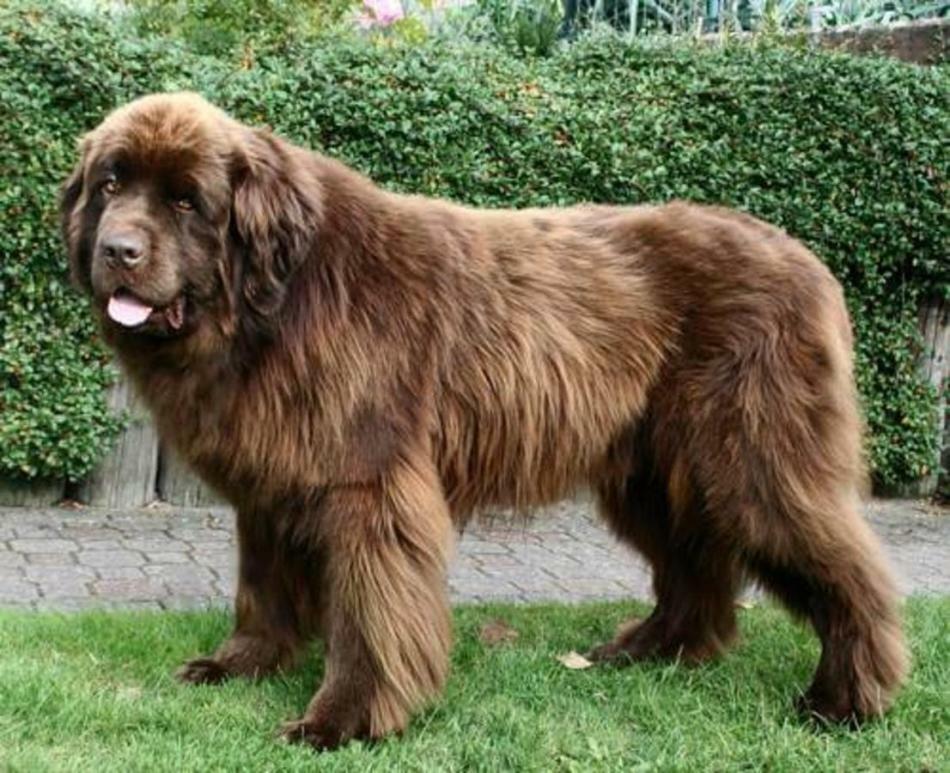 Newfoundland paw prints: photos
Newfoundland paw prints: photos 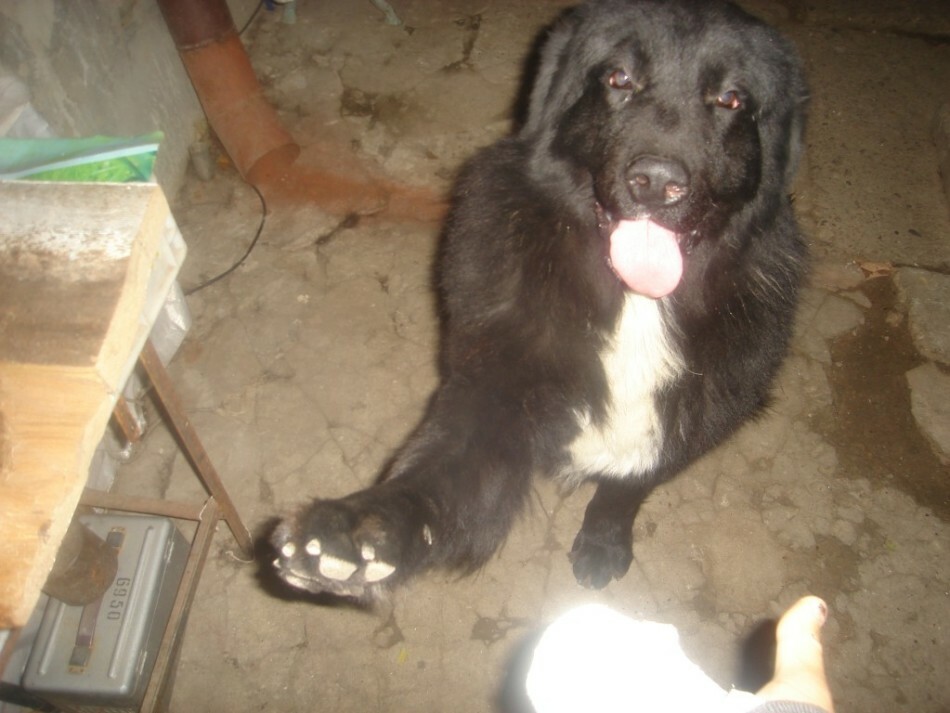 Newfoundland dog paws: photos
Newfoundland dog paws: photos Newfoundland breed dogs color - gray, black, brown, chocolate, silver, black and white: photos
The breed is of a different color. Now the most popular are individuals of black, brown and white flowers. There are also mixed colors. Below in the photo Newfoundlands of different colors are represented.
 Newfoundland breed dogs color - gray, black, brown, chocolate, silver, black and white: photos
Newfoundland breed dogs color - gray, black, brown, chocolate, silver, black and white: photos 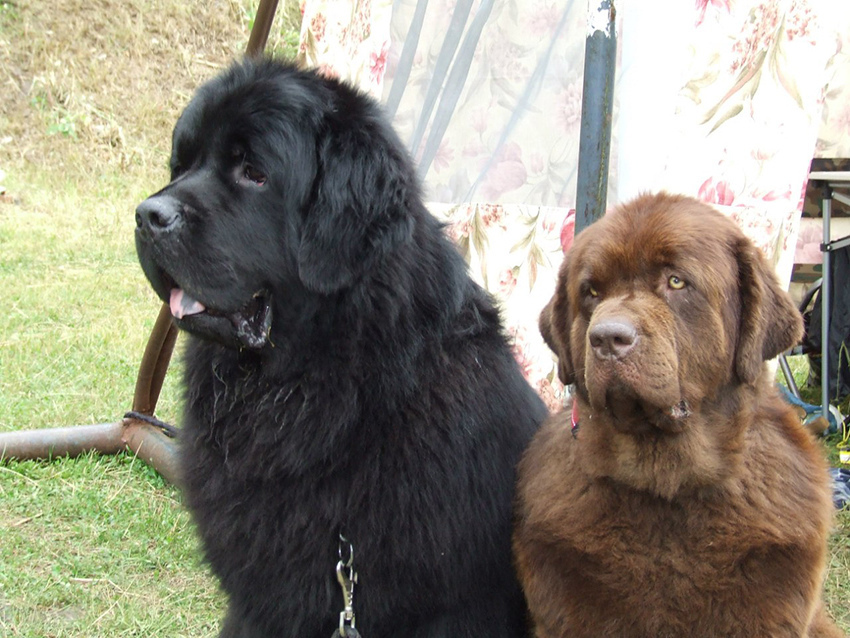 Newfoundland breed dogs color - gray, black, brown, chocolate, silver, black and white: photos
Newfoundland breed dogs color - gray, black, brown, chocolate, silver, black and white: photos  Newfoundland breed dogs color - gray,black, brown, chocolate, silver, black and white: photos
Newfoundland breed dogs color - gray,black, brown, chocolate, silver, black and white: photos 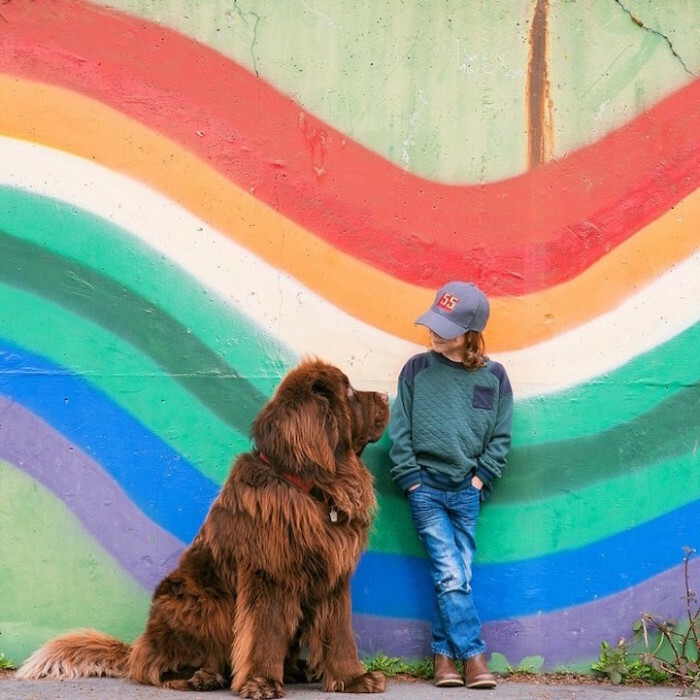 Newfoundland breed dogs color - gray, black, brown, chocolate, silver, black and white: photos
Newfoundland breed dogs color - gray, black, brown, chocolate, silver, black and white: photos Newfoundland - breed of dogs: character
Character of the dog is friendly. He has an innate instinct to save and pull a drowning man out of the water. Dogs perfectly coexist with children and are well suited to dressing. If desired, you can raise a guard from the dog. Do not start a dog if you have a very small child in your family. This is due to the fact that dogs at a young age can not adequately assess their strength. In adolescence, dogs are very energetic and can simply drag along a child or an elderly person. Mature dogs are adequate and strong. They can already walk next to the owner and assess their strength.
It should be understood that the dog has a high intellect, he is able to make his own decisions and can simply ignore an empty or meaningless team. The dog does not need to break and prove who is the first in the family, since the dog is friendly. It should not be punished, it's enough just to show that you are offended and disappointed. This dog is not suitable for protection or hunting. He likes to look after children and carry heavy bags.
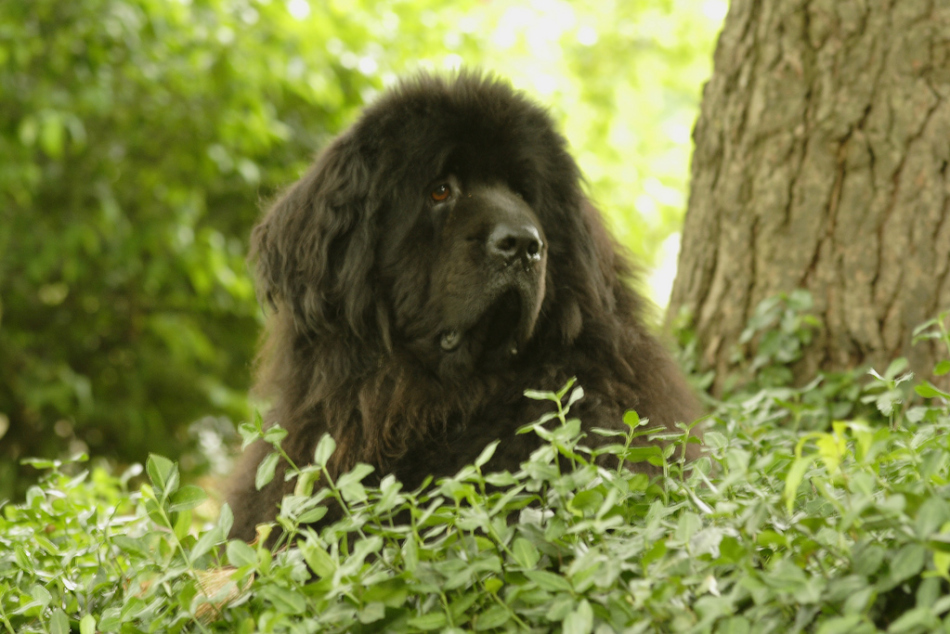 Newfoundland - a breed of dogs: the character of
Newfoundland - a breed of dogs: the character of How does the Newfoundland host change?
This breed does not tolerate a change of owner. In a new family, it may become closed and not react to the commands of the new owner. Therefore, if you need to transfer the dog to new hands, several times a week, come to visit the future owner. So the dog will get used to new owners and it will easier transfer a break with the former owner.
 How does the change of Newfoundland host change?
How does the change of Newfoundland host change? When does the Newfoundland heat begin, how many Newfoundlands live?
The first heat in the bitch is observed at the age of 6-12 months. In this case, the dog can be restless. The duration of heat is 7-28 days. Admit mating in bitches is from 20 months, and in males from 18 months. Previously, it is not necessary to pair the dogs, as this is fraught with consequences.
Newfoundland does not last long. The average life expectancy is 8-10 years.
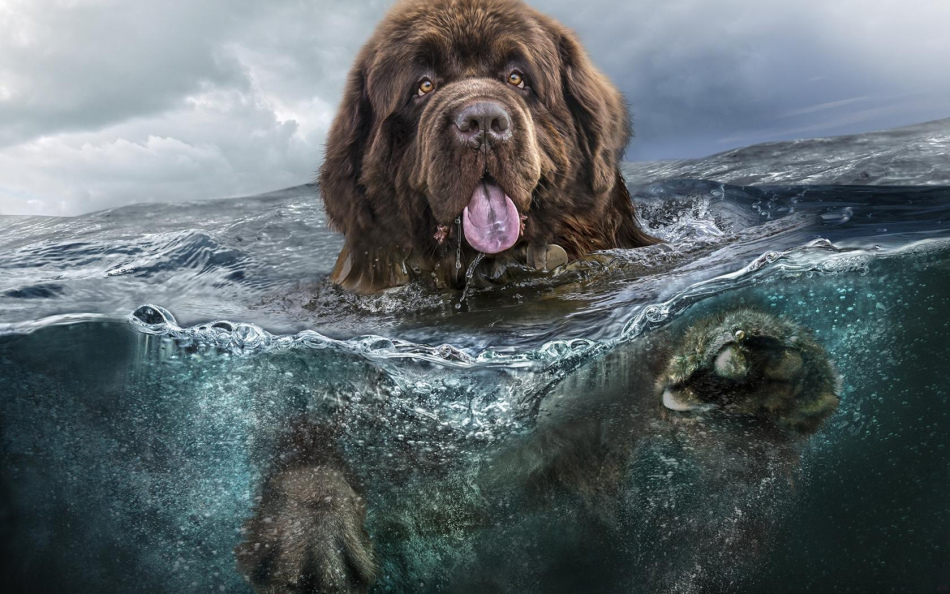 When does the Newfoundland heat begin, how many Newfoundlands live?
When does the Newfoundland heat begin, how many Newfoundlands live? What to feed newfoundland, what vitamins to give?
Puppies and adults are recommended to give both dry food and natural products. There is a table indicating the norms of protein fats and carbohydrates for dogs for a day. Many dog breeders recommend giving dogs natural products. It is better to give meat in a boiled form. In general, the diet of dogs should consist of dairy products, meat and cereals. Vegetables are introduced in a boiled form. It is also recommended to give sea or river fish. Feeding is carried out twice a day in the morning and in the evening. On the day the dog needs about 800-1000 g of meat products. It's beef, lamb or chicken. In addition, the diet is administered calcium and vitamin preparations. Recommend vitamins 8 in 1 for dogs.
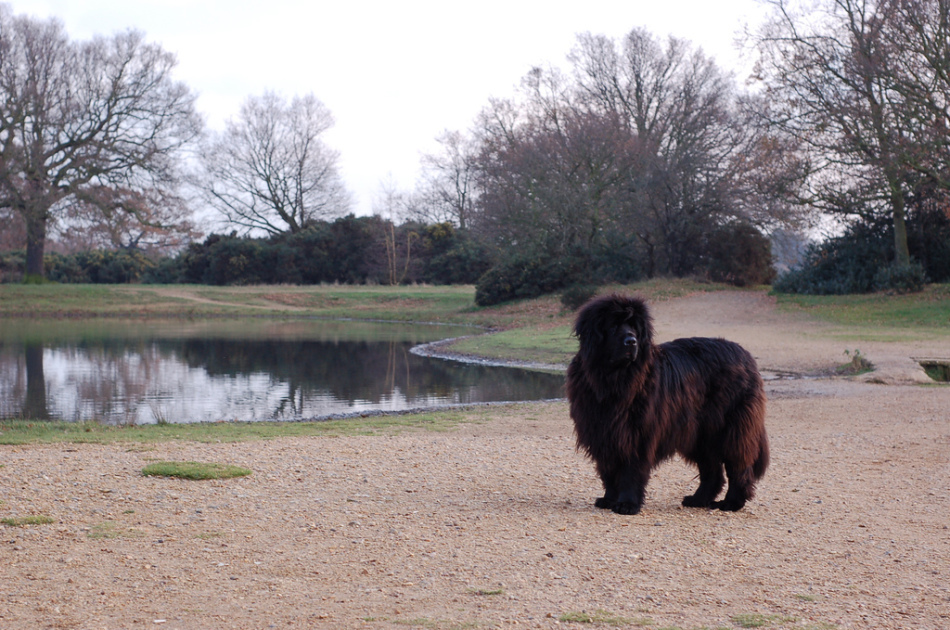 What to feed newfoundland, what kind of vitamins to give?
What to feed newfoundland, what kind of vitamins to give? How do I keep and care for Newfoundland in an apartment?
Dogs can be kept in the apartment. To do this, highlight your new pet place and put the sleeping bag there. The place should be protected from sunlight. This is due to the fact that the dog can get a heat stroke. The dog in the apartment will shed all year round a little. Be prepared for the fact that the dog has a lot of saliva, so you will often have to wash the floor and clean it.
You need to walk with a dog 2-3 times a day. With a small puppy about 4 times a day. In this case, you need to walk in the active mode. It will not be superfluous to run in the forest. Drive the dog to swim in the river.
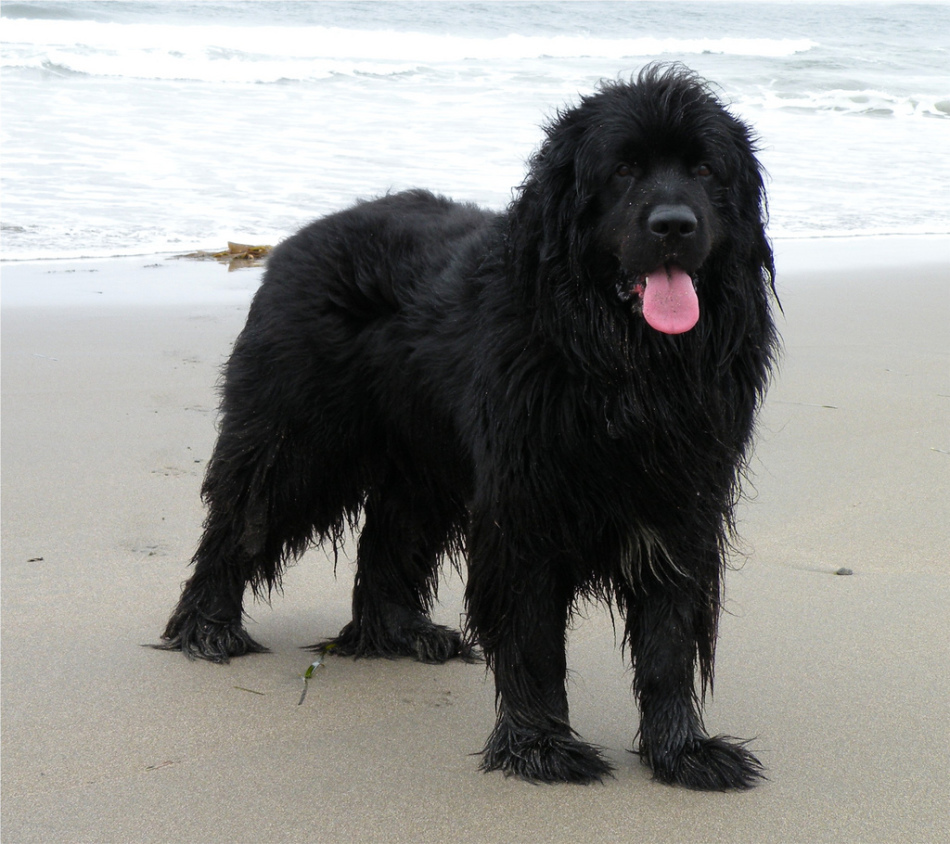 How to keep and care for Newfoundland in an apartment?
How to keep and care for Newfoundland in an apartment? Best nicknames for the dog Newfoundland: list
List of the best nicknames: Alf, Amanda, Annabel, Baxley, Baxter, Baloo, Barney, Barry, Black, Boy, Bagheera, Betty, Wolf, Harry, Hector, General, Greta, Dexter, Jazz, Jasper, Jack, Jackson, JeffreyJumbo, Jesse, Ginny, Zulu, Zora, Irta, Cliff, Cara, Carrie, Cassie, Leroy, Lina, Lucy, Magnus, Mutleigh, Maxi, Melba, Margot, Nadar, Otis, Pumba, Rico, Rufus, Roxy, Ruby, Samson, Sebastian, Simba, Sumo, Sam, Stella, Teddy, Tor, Turbo, Tara, Ursa, Fred, Phil, Flora, Hulk, Harley, Hogan, Hugo, Tsunami, Chef, Chulo, Cherry, Sheila, Sheriff, Sherry, Annie.
What is the difference between a diver from Newfoundland?
This is the same breed. Newfoundland is named after the island on which it was distributed. Diver began to call the dog because of love to the water and the instincts of the rescuer.
 What is the difference between a diver from Newfoundland?
What is the difference between a diver from Newfoundland? Newfoundland - breed of dogs: reviews of owners
All owners of such dogs adore their pets. The dog is very positive, she is always in a good mood. In this case, the dog never gets bored and does not require a lot of attention. It is enough to talk with a dog and periodically walk.
It is worth noting that the negative moment in the content of such a dog is:
- Constant drooling
- Snoring during sleep
- Permanent molting
- Complexity in the elongation of the paws, as mud is clogged in the membranes
- Frequent digestive problems
But all these shortcomings are compensated by positive qualities andfriendliness of the dog.
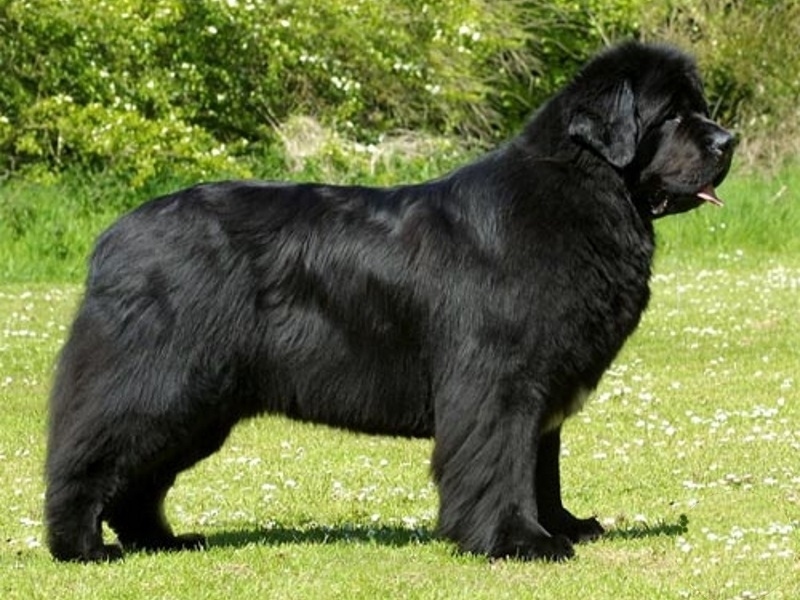 Newfoundland - breed of dogs: feedback from owners
Newfoundland - breed of dogs: feedback from owners Newfoundland is a special dog that requires special care and feeding. But this is one of the most friendly breeds, which is ready to come to the rescue at any time.
